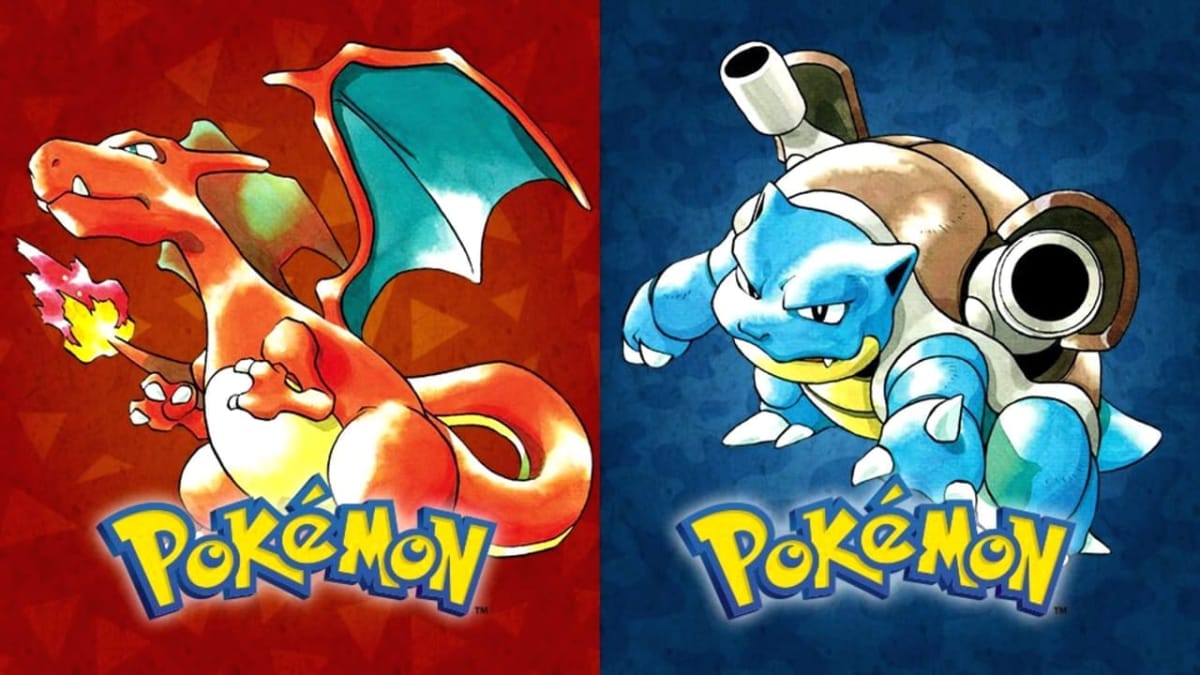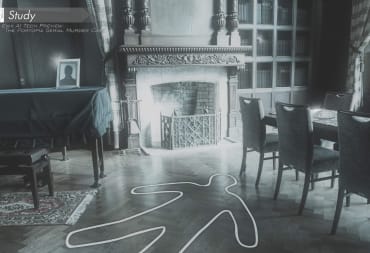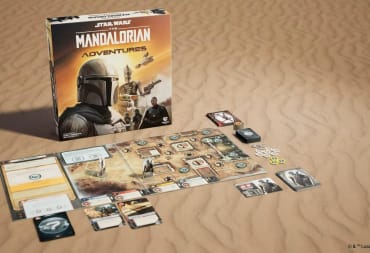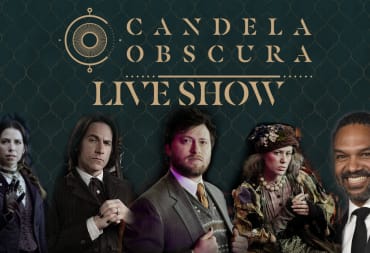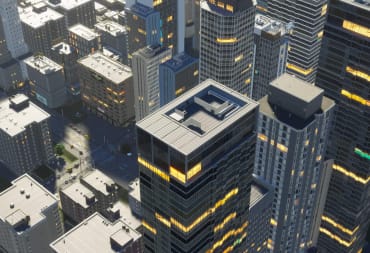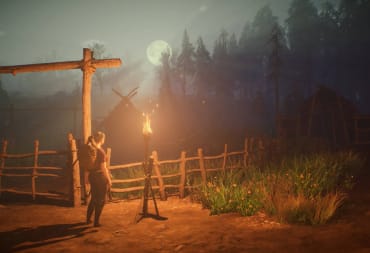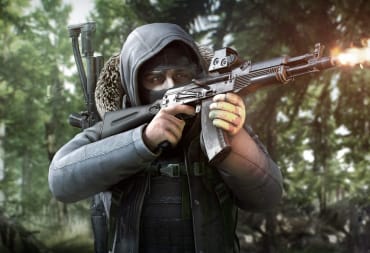Come one, come all! Welcome to another brand new series for TechRaptor! Last year, we dedicated a year of content to one of the biggest RPG franchises in the world, Final Fantasy. This year, we’re covering something totally new. It’s a year of content dedicated to… one of the… biggest RPG franchises… in the world. Huh. Pokémon! Generation I is back in action!
This is part of a continuous series. Be sure to check out the other entries of the Year of Pokémon!
Yes, this year is dedicated to the set of games that grabbed kids’ addiction centers by the throat and has refused to let go for over 20 years since—an actual craze like the world has never seen with a game series. Pokémon has created so many memories for so many people that we’d be remiss if we didn’t take a look back and see how the series has evolved.
A look at the original Pokémon games was also featured in our Game Changers series, which looks at some of the best and most influential games of all time.
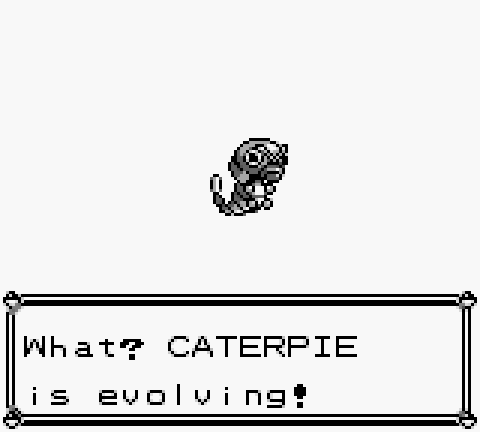
So that’s what we’re going to do! From Generation I aaaaall the way to VII, we’re going to dive deep into the world and see what makes each game tick. As such, we’re starting at ground zero. While Japan started their Pokémon adventures in 1996, it wasn’t until 1998 that the fun began for America. Originally, Pokémon came in two flavors: Red Version and Green Version. Later on in the year, Japan saw an improved release called Blue Version.
When it came time for the West to receive these games, developer Game Freak tweaked and improved the games enough based on their Blue Version to release them as Red Version and Blue Version. How confusingly colorful, no?
Anyway, this is going to be a little different than the Year of Final Fantasy. Since each generation has several games, I’m only replaying one of them to see how they hold up. Don’t worry, though, I’ll try to explain each version’s differences as best as I can. After all, I grew up all through the craze and have pretty much played each game to death.
Well, I think I’ve rambled on enough. It’s time to start. Are you a boy or a girl? Haha, just kidding … we’re not even that advanced yet. Ash, or Red, or whatever your name is, welcome to Kanto! Your Pokémon adventure is about to begin!
Pokémon Generation I - February 27th, 1996 (Game Boy, 3DS)
Generation I includes: Green Version, Red Version, Blue Version, Yellow Version
This review is primarily based on Blue Version.
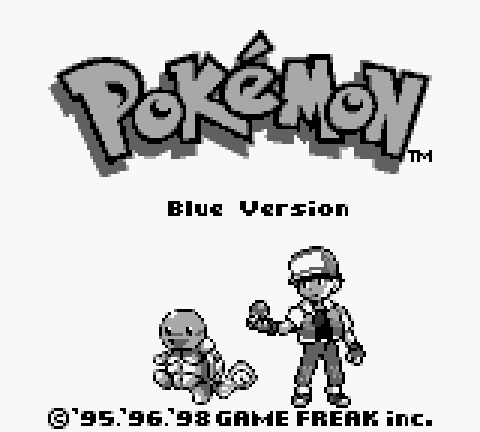
Story
“Your very own Pokémon legend is about to unfold!”
When you actually sit and think about the implications of the Pokémon plot, it’s kind of insane. In the Kanto region, you start as a young adventurer from Pallet Town. One day, it’s time for your 10-year-old self to venture out into the world! However, before you can leave, you’re immediately stopped by Professor Oak. You can’t go in the tall grass without a means of defense! What are you, stupid?
Instead, he drags you to his lab and lets you choose between one of three choices: the Grass-type Bulbasaur, the Fire-type Charmander, or the Water-type Squirtle. Whichever you choose, your rival Gary/Blue/Lamebutt will choose the type that is better than yours. Jerk!
Anyway, now you can go forth onto your adventure … after you go to the next town, pick up a package for Professor Oak at the Poké Mart there, and bring it back to Pallet Town. After that, he gives you a Pokédex. This device will keep track of all the crazy new and exciting Pokémon you can find in the world.
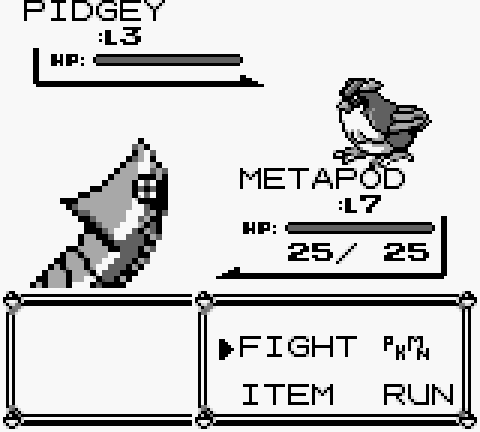
You have two objectives now. The first is to fight in Pokémon Gyms around Kanto, collect all the badges, and take on the Elite Four. The second is to catch ‘em all! That’s right, you have to capture all 150 (or 151…) Pokémon throughout the region. Time to get started!
I don’t really have too much to add here. It’s Pokémon. The plot has never been the focal point of the series, and you really don’t do much else in the story. You head to Pewter City and fight Brock, then head to Cerulean City to take on Misty. From there you continue onward, getting badges and taking names. There’s not a lot of veering from the main plot, except for one point where you take on Team Rocket at their HQ.
You also run into Gary/Blue/Buttmunch a lot throughout the game. At various points, you’ll do battle with him and see his team growing, much like yours. He’s always one step ahead of you, and you can see his name on plaques in each Gym you come across. It’s annoying, especially considering how snide he is to you. Make sure to put him in his place!
Spoilers lie beyond this point! Skip to the next bolded text to avoid story spoilers!
So, you’ve got all eight badges. You’ve slapped the crap out of Team Rocket’s plans,and dunked extra-hard on the Team Rocket leader, Giovanni. He just so happens to be the final Gym Leader, so you’ve now whooped his sorry butt twice. All that’s left is to go to the Indigo Plateau. That is, after you square off against Gary/Blue/Assface if you didn’t do it earlier in the game.
Before the Indigo Plateau, though, you must go through Victory Road. It’s a tough challenge, but by now you should be able to handle it with little issue. Make sure to pick up Moltres here, that’s a good legendary Pokémon!
So, you make it through Victory Road and now it’s time to lay down some pain on the Elite Four. Lorelei the ice-type trainer? Pfffft, easy. Bruno the Fighting-type user? Not even a problem. Agatha the Ghost user? Butterfree’s got all sorts of Psychic moves for that issue. (Note: Don't actually do this. Psychic moves do nothing to ghost types. I forgot that the first time I fought her. It was bad.) Finally, Lance the Dragon-type trainer. Sounds intimidating, right? Weeeell… Blastoise has Ice Beam, so it’s only a minor speed bump. With that, you’ve beaten the game!
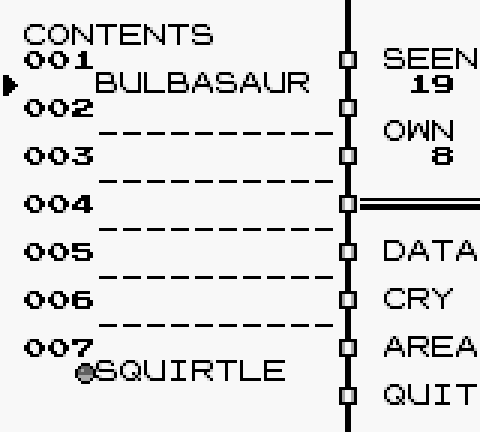
...Except not. Now, after the Elite Four, you must face the Pokémon League Champion. The one who bested the Elite Four before you. It’s… a-are you kidding me?! He got here before I did? That little piece of--... Sorry. Allow me to regain my composure.
So, your final challenge is a braindead easy fight against a supposedly very powerful Gary/Blue/[wildly offensive insult deleted]. Okay, destroy his sad excuse for a lineup of Pokémon, and you’ll be named champion! Congratulations! You get to put your team in the Hall of Fame, and you’re now crowned champion of the Kanto region!
Spoilers end here. You can continue reading below!
The truth is, this story is extremely basic. It’s designed to be that way to make it easy for children to understand. There’s nothing wrong with that, of course! The game isn’t story-focused, so what it has is perfectly fine. It’s not terribly engaging but it suffices. There’s really not much to say here, like I said. Just … try not to think about the fact that it’s about 10-year-old kids running around an entire country using enslaved monsters to beat the crap out of each other.
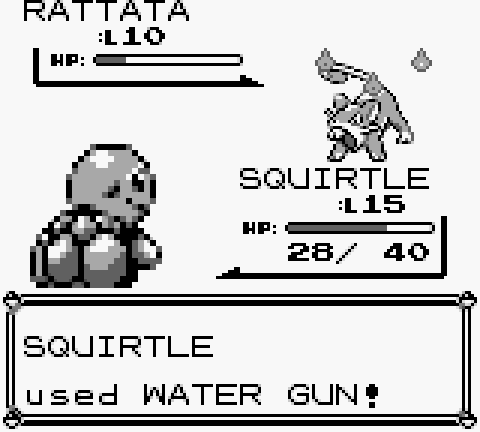
I said don’t think about it!
Graphics
“Do you still want to challenge me? Fine then! Show me your very best!”
To be perfectly honest, it was amazing that the first generation of Pokémon can even fit on a cart. It’s a great-looking game … most of the time.
Apparently, a lot of the sprites were changed from the original Japanese Green Version to look better for the American release. It’s nice that they did this, as the sprite work usually looks great. Each Pokémon gets a unique sprite, both front and a strange up-close back view for when you’re in a battle. Most of the time these just look blurry and odd, but it’s nothing gamebreaking.
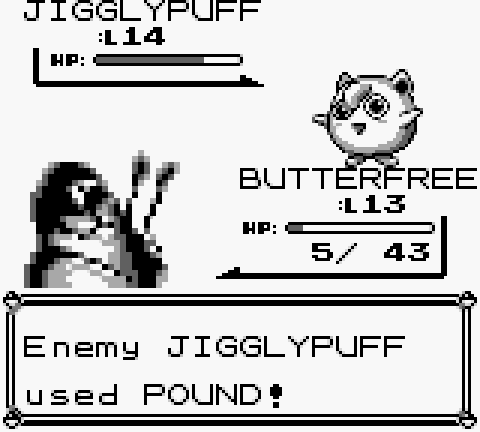
A lot of the effects for attacks are nothing to write home about, of course. It’s usually some combination of the same nine or ten effects made to try and simulate an attack as well as they could. Despite the limited hardware, Pokémon Generation I looks pretty great.
The environments aren’t too varied, though. You have normal roads, caves, buildings, the open ocean, and that about covers it. There are some unique areas, though! For instance, the infamous Pokémon Tower in Lavender Town is pretty creepy. It’s essentially a giant tower full of gravestones. It looks very foreboding with what’s essentially a small maze of graves and creepy mediums trying to fight you.
Another neat area is the S.S. Anne. It’s a ship you board for a while during your adventures. You get to see a fairly small space filled with people and things to do, with a bunch of tiny cabins as well as fighting several trainers on the deck. It’s a pretty neat locale overall!
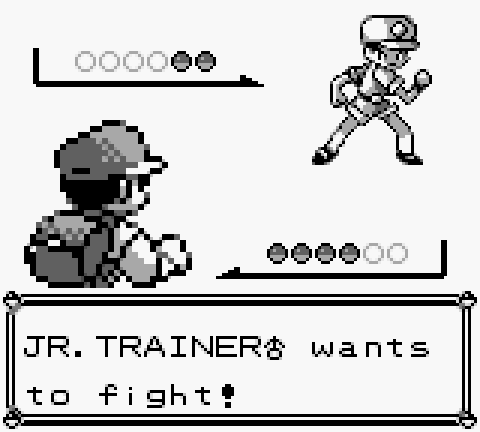
One of the most interesting-looking areas, though, is the Pokémon Safari Zone. This is a contained grassland that’s thick with tall grass, small ponds to fish in and swim across, and overall it’s just a neat mix of all the terrain you see in your adventure. It feels a lot more wild than the normal roads between cities, which makes sense. It’s a safari, after all.
However, even that isn’t the best area. To me, the Pokémon Mansion on Cinnabar Island is the best locale in the game. It’s so creepy. You have to creep around an old, abandoned mansion where they used to do experiments on Pokémon and even now, it looks great. It’s decrepit and strange, and I can’t get enough of it.
So that about covers the graphics. They’re perfectly acceptable, given the limitations of the original Gameboy. The sprites may shock people who haven’t seen them in a while (guilty as charged!), but it stopped bothering me really fast. Some pretty decent work from Game Freak here!
Sound
“I came when I heard you beat the Elite Four.”
Pokémon Generation I has a pretty decent soundtrack. However, the crazy part that people may not have realized back in the day is that most of the songs are very short. Some of the better tracks are only 40-second loops, but there are still a few that are longer than that at least.
One thing Pokémon got right in its first generation, however, is the sense of adventure. This absolutely shines through in its music.
https://www.youtube.com/watch?v=e8pE9euOYbs
How could I start with anything else? It’s perhaps the most iconic theme on the entire Game Boy system. If you grew up in the 90s and that isn’t hitting you right in the feels right now, you might need to get checked out at the doctor. It’s more than that, though. There are plenty of route themes and town themes that instill that same sense of adventure.
https://www.youtube.com/watch?v=6n7MvvdqpMU
Composer Junichi Masuda didn’t have a lot to work with when you consider the soundchip of the Game Boy, so for Pokémon Generation I to sound as good as it does it is impressive to say the least. Even the iconic battle theme is exciting to listen to:
https://www.youtube.com/watch?v=pKH6_4dP2Rk
Sure, it sounds pretty basic now, but that’s because we’ve all listened to remixes and updated versions of it over the past two decades. The original still holds up very well! 6-year-old me would have his blood pumping just hearing that now, and even today I still can’t help but get a little excited.
The only issue with the sound is a fault of the Game Boy itself. With only so many sound channels, it was impossible to have both the game’s sound effects and the music play simultaneously. As such, during battles your music would be skipped over a bit while attacks played out, making listening to such themes difficult at times.
However, overall Pokémon Generation I has some amazing themes, some of which are still remembered fondly today. They’re iconic, and they started right here.
...No, I wouldn’t go through the sound section without mentioning the theme to Lavender Town. Almost scared you, didn’t I? Behold, the backing track of many a creepypasta:
https://www.youtube.com/watch?v=Dx7sQa6d9
Gameplay
“For some people, Pokémon are pets. Others use them for fights.”
Now we arrive at the main course of the Pokémon franchise. Everything about the games has been semi-important, but the gameplay of Pokémon Generation I kicked off the immortal phrase “Gotta catch ‘em all!”. This is what got kids so wildly addicted to the Pokémon Craze that made national news in the 90s.
As I mentioned before, the game tasks you with two main quests. The first is to defeat all eight Gym Leaders, and then the Elite Four after that. For most people, that’d be the end of it. However, Game Freak knew the real meat of their game would come from the second quest: complete your Pokédex by catching all 150 (151!) Pokémon. Remember back when Generation I came out and that seemed like a huge number? If only we knew...
It sounds daunting, and for a kid it certainly is. It’s manageable now as an adult, but there was a sneaky roadblock Game Freak put in place: certain Pokémon are specific to one version of the game. This was to encourage players to interact and trade with (as well as battle) one another. They furthered this connection by making certain Pokémon only able to evolve through trading.
"Evolution"? Why yes, I did say evolution. Either by leveling up or through other unique means, Pokémon can evolve into stronger forms. For example, I mentioned my Blastoise above. Originally, he started as Squirtle. At level 16, he evolved into Wartortle. At level 36, he further evolved into his most powerful form, Blastoise.
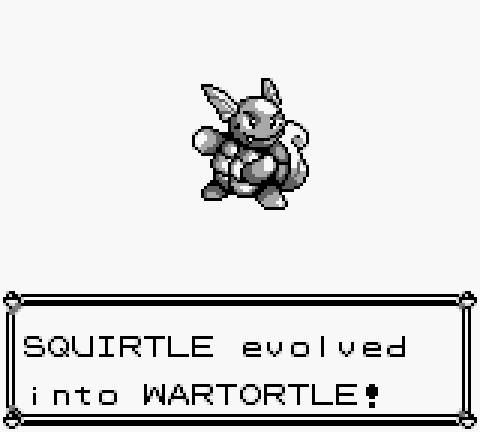
Squirtle leads me into my next point. To start off your adventure, you must choose between three starter Pokémon: Squirtle, Charmander or Bulbasaur... that is, so long as you're not playing Yellow Version. In an attempt to follow closer to the plot of the anime, Pokémon Yellow Version forces a Pikachu upon you. So... disregard all that starter choice I just said if you picked that version!
After you pick your starter (or your starter is picked for you), you can go out into the world and battle. Gameplay mostly consists of either walking around the world or fighting in battles with wild Pokémon or in trainer battles.
As I said before, the point of the game is to catch ‘em all! To do so, you must engage with a wild Pokémon. Battles are turn-based, and your stats determine all sorts of things. How hard you hit, how much damage you mitigate, whether you go first in a turn, etc.
You have four slots to learn attacks. If you want to learn a new attack, you have to unlearn a previous one of your choice. You learn attacks as you level up, and you can learn more attacks from items called TMs and HMs. TMs, or Technical Machines, can be all sorts of attacks, such as Psychic, Rock Slide or Swift. These are one-time use items, so use them wisely!
HMs, or Hidden Machines, are different. They grant you an attack, but they also have a use in the game’s overworld. These are technically key items and as such, they can’t be taken out of your inventory. You can use them as many times as you want, but be warned: Once you teach a Pokémon an HM move, it cannot be deleted ever. Thankfully, a majority of these moves are powerful enough that you wouldn’t want to delete them anyway.
The five HMs in Pokémon Generation I are Cut, Fly, Surf, Strength and Flash. Cut allows you to chop down some tall grass to access new areas. Fly lets you to immediately travel to any previously-visited town. Surf puts you on a Pokémon’s back so you can ride across water. Strength buffs up your Pokémon so they can shove large boulders out of the way. Finally, Flash can brighten a dark area, allowing you to see your path through certain caves.
Using any combination of moves is usually fine, but I always try to have a variety for each character. See, each move and each Pokémon have a type. There are a bunch of types of attacks, while Pokémon can have one or two of those same types. The total list for Pokémon Generation I is: Normal, Grass, Fire, Water, Ice, Bug, Dragon, Fighting, Flying, Ghost, Ground, Electric, Poison, Psychic, and Rock. Types are set up in such a way that certain move types are super effective against others while those same attacks are less effective against different types.

For example, the starter Pokémon are a great introduction to this. The Fire-type attacks Charmander learns are strong against the Grass-type Bulbasaur, whose attacks are effective against the Water-type Squirtle, whose attacks are strong against Charmander.
This is the basis for a very deep battle system that will only get more and more in-depth as we move through generations. However, Pokémon Generation I was a solid foundation for the battle system we see today.
Now, I’ve said all this and we still don’t even know how to catch Pokémon yet! We can beat the crap out of them, but how do we get them in our party? Well, I mentioned fighting first because you have to do that before anything else. Your best chances of catching a Pokémon are when its HP is very low (but it isn’t knocked out!) alongside giving it a status effect, such as Paralyze or Sleep. From here, you must go into your inventory and select either Poké Ball, Great Ball or Ultra Ball, depending on what you’ve bought from stores. You chuck the ball at the Pokémon and pray that it stops trying to wiggle free from it.
After three shakes, you’ve caught it! Its information is automatically added to the Pokédex. If you have a slot free in your party, it’s added right to it. However, if you have a full set of six Pokémon with you, it’s sent to the PC found in Pokémon Centers all around Kanto.
A Pokémon Center is a building in most towns that you enter to heal your Pokémon. You can instantly heal them, revive any fainted Pokémon and remove any status effects for free. As I mentioned above, you can also access your PC to swap out Pokémon at your leisure.
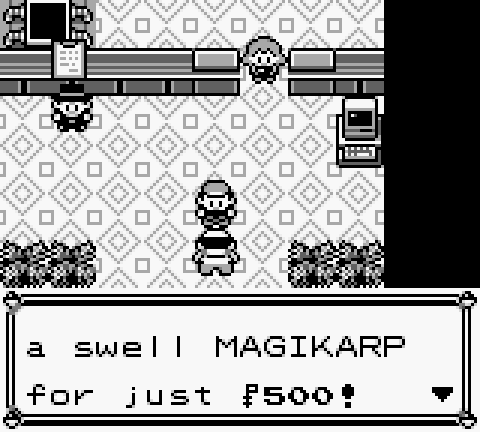
The secret to a strong team of Pokémon is type variety. You want to have a wide range of attacks while having varied types of Pokémon to counter other attacks. For instance, Blastoise is a Water-type Pokémon. He’s susceptible to Grass and Electric attacks, so I wouldn’t want to use him against enemies with those move types. However, Blastoise can learn many move types. I have Ice Beam on him as well as Water attacks like Hydro Pump, so even if I’m stuck against a Grass-type Pokémon, I still have a move type advantage over them even if Blastoise himself is weak to Grass attacks.
The point is, the game thrives off this crazy mishmash of move and Pokémon types. It’s really exciting to figure out what each Pokémon can handle, so be sure to experiment. That’s the whole point of the game!
The gameplay of Pokémon is pretty rock-solid overall. The combat is easy to understand with deep mechanics for advanced players. It’s a very simple premise to just go and face off against the Elite Four, but catching all Pokémon is a pretty hardcore feat. The only major complaint I have is that traversal can take a very long time, but Game Freak even managed to mitigate that when you receive a bike about 40% of the way through the game. Pokémon Generation I really hits the mark in laying an impressive gameplay groundwork for the franchise.
Extras/Replay Value
“CONNOR is playing the SNES! ...Okay! It’s time to go!”
There is so much to do in Pokémon Generation I. I haven’t discussed much of it because it’s all optional, but this is the perfect place for that. Let’s jump right into it!
Firstly, fishing. Throughout the game, you can find three different rods: the Old Rod, the Good Rod, and the Super Rod. Each fishing rod gives you a chance to catch one of a certain set of Pokémon. Some Pokémon can only be caught via fishing, so keep an eye out!
Another side activity is the Pokémon Safari Zone. Now, I did mention this before and the Safari Zone itself is mandatory, as it’s how you get an HM. However, there’s a lot to do there that’s totally optional. Like fishing, there are certain Pokémon that you can only get in the Safari Zone. It’s actually a very unique part of the game!
Firstly, you only have 500 steps you can make in the zone. After this, your time is over and you have to pay to restart the Safari Zone trip. In here, you can walk into tall grass to try to encounter the Pokémon in the Safari Zone. Unlike normal battles, you have four choices when encountering a wild Safari Zone Pokémon. You can throw bait, which lowers the chance of catching a Pokémon but makes it more likely to stick around. Throwing a rock will raise the chance of a Pokémon running, but it also makes it easier to catch. You can throw one of the Safari Balls you’re provided, or you can run away. It’s a much simpler version of the combat, but it’s still neat regardless.
Another neat set of minigames are the Game Corner in Celadon City. When you acquire a Coin Case in the building, you can participate in a minigame. This is a simple slot machine, which sounds boring. To some, it probably is. To me, however, I thought it was the coolest thing ever! When you win enough coins, you can go next door to the Prize Corner. Here, you can exchange your coins for Pokémon and moves! In Blue Version, you can pick between Abra, Clefairy, Nidorino, Pinsir, Dratini and Porygon. Pretty neat if you ask me!
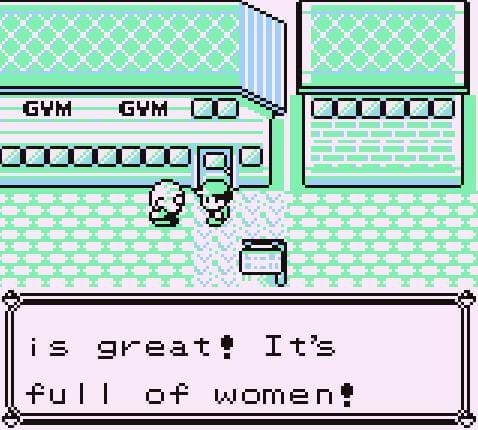
Now, perhaps the biggest sidequest in Pokémon Generation I is catching legendary Pokémon. In this game, the main ones are the three legendary birds: Articuno, Zapdos, and Moltres. You can find Articuno at the bottom of a large dungeon called Seafoam Islands. Zapdos resides in an abandoned power plant near Cerulean City, and Moltres is hanging out on the path to the Indigo Plateau. Unlike other Pokémon, these are one-of-a-kind. As such, I highly recommend you save before engaging these beasts. If they get KO’d, you can never catch them again!
They aren’t the only legendary Pokémon, though. Mewtwo, the 150th Pokémon, lies in wait after you beat the Elite Four. You may have noticed early on that there was an inaccessible cave near Cerulean City. A man tells you that you can only enter after you’ve beaten the Elite Four. So, fresh off your win, you can enter the cave. There are tons of strong Pokémon within, and at the very end of it is Mewtwo himself. Much like the birds, make sure you save before fighting him. Chances are, it’ll take a few fights to get to him! Otherwise, you can use that trusty Master Ball you get from defeating Team Rocket earlier in the game. It’s a one-time use ball that has a 100% catch rate, so most people save it for Mewtwo. I know I did!
As you can see, despite being the first in the series, Pokémon Generation I made sure there was a lot to do. Even when you wanna take a break from all the Gym battling, you have plenty to keep you busy. Get to it!
The Final Word
“A world of dreams and adventures with Pokémon awaits! Let’s go!”
As I’ve said several times throughout this review, Pokémon Generation I was an excellent beginning. It laid the groundwork for one of the most beloved franchises of all time, and though it’s a little rough around the edges now, it still holds up remarkably well in my opinion.
The graphics look pretty good (mostly!) for the Game Boy, the music is basic but memorable, the gameplay is shockingly deep for a first entry in the series, and there’s plenty to do while on your journey.
Even though other generations have moved past it in quality, Pokémon Generation I still stands strong by itself. It’s definitely worth a look if you want to experience the birthplace of a phenomenon.
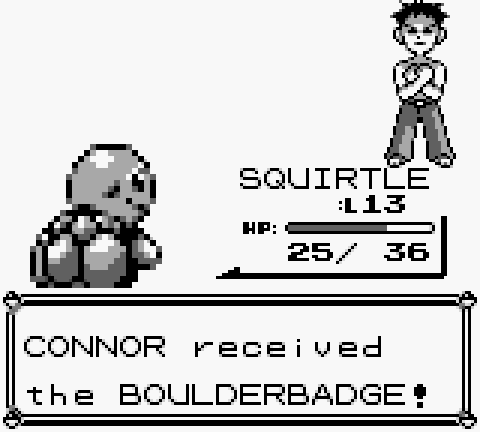
Have a tip, or want to point out something we missed? Leave a Comment or e-mail us at tips@techraptor.net
